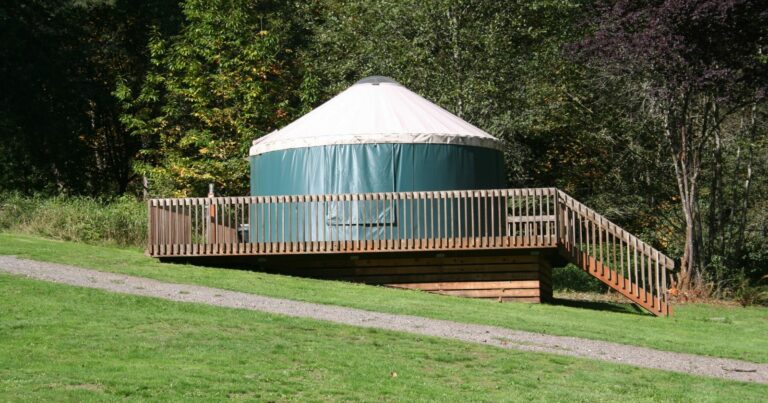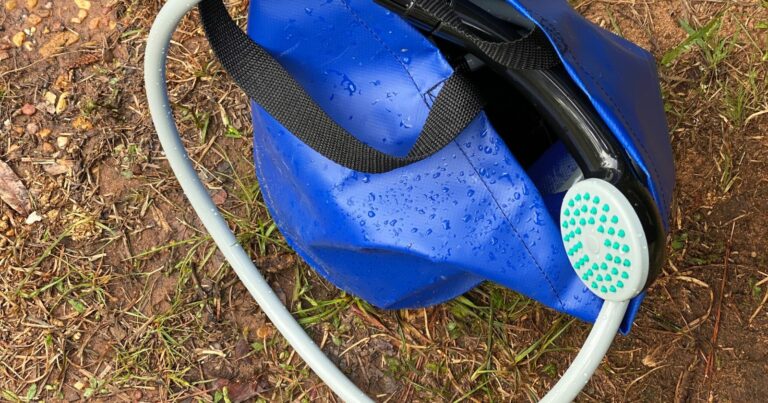How to Poop While Camping: A Guide to Proper Backcountry Bathroom Etiquette
One of the less glamorous realities of camping outdoors is having to poop without modern plumbing. But taking care of business in the wilderness doesn’t have to be complicated or messy. By following some simple guidelines, you can make going number two while camping clean and fuss-free.
This backcountry bathroom guide covers smart restroom selection, proper cathole setup, waste disposal, and hygiene. With the right know-how, pooping on your camping trip will be easy as pie! Let’s tackle this important topic so you can focus on fun in the forest instead of facilities.
Choosing the Best Place for Pooping
The first step is picking an appropriate spot to pop a squat when nature calls. Here are some tips:
- If bathrooms are available, always opt for facilities over going au naturel. Check if outhouses, vault toilets, or portable toilets are provided.
- If no restroom is nearby, wander at least 200 feet (60 meters) away from water sources, trails, camping areas, and recreation sites before choosing your personal potty.
- Pick a spot hidden behind bushes, trees or boulders for privacy. Digging a small hole can provide extra screening.
Selecting the right pooping place keeps your waste safely away from water supplies and high traffic areas. No one wants to encounter a smelly surprise!
Tools for Digging the Perfect Cathole
In the absence of bathrooms, you’ll need to dig a cathole to deposit your poop into. Having the right tools makes this easier:
- A small lightweight trowel is ideal – it’s easy to pack and designed for digging the perfect poop holes.
- A garden spade or folding shovel also gets the job done if you have the space for it.
- In a pinch, use a strong stick or rock to break up and scrape out the soil if you don’t have a trowel.
- The key is digging down 6-8 inches deep and 4-6 inches across – big enough to contain waste but small enough to easily cover up.
With your cathole digging implement in hand, you’re ready to set up your backcountry toilet!
How to Dig a Cathole for Pooping
Once you choose a site, here’s how to properly dig a leave-no-trace cathole:
- Use your trowel or digging tool to break up and scoop out dirt until you’ve created a hole 6-8 inches deep and 4-6 inches wide.
- Shape the hole so it has a “lip” on one side to sit on. This keeps the edge from crumbling as you go.
- Avoid digging on a slope or uneven ground that could cause waste to spread outside the hole.
- If the soil is very loose or dry, reinforce the sides with rocks to prevent collapse.
Now your cathole potty is prepped and ready for nature’s call!
Pooping in the Cathole
When it’s time to use your DIY wilderness toilet, follow these tips:
- Pull down your pants and carefully squat over the cathole, steadying yourself on a branch or rock if needed.
- Relax and let nature take its course – just as you would on a normal toilet.
- Take care not to kick or knock dirt back into the hole as you go.
- For extra privacy while you go, you can set up a temporary site screen using a camping tarp or towel around your cathole.
- If you need toilet paper, make sure to pack it out (see disposal tips below).
Pooping directly into your pre-dug cathole contains and separates waste from the surrounding environment.
Burying Your Waste After Pooping
Once you’ve finished your business, the final step is covering up the aftermath:
- Use your trowel to lightly scrape dirt, pine needles, leaves, or other natural materials from the surrounding area into the cathole to bury the poop.
- Mix in sticks or rocks to help break down waste faster. Cover fully until no waste is visible.
- Disguise the bury site by smoothing over the area with your foot to obscure the disturbed soil.
Properly burying your human waste after pooping in the cathole speeds decomposition and prevents spread of bacteria.
Packing Out Toilet Paper and Supplies
Never leave used toilet paper behind in the woods! Practice pack-it-out etiquette instead:
- Bring 1-2 ziplock bags and reusable Tupperware-style containers to collect used TP. They seal in odors and prevent leaks.
- Use TP sparingly, only as needed. Choose unscented, biodegradable TP if possible.
- Do a “poop burrito” by wrapping used TP around waste. Put the burrito in your container, then in a ziplock.
- Stash waste bags in your pack’s external pocket for easy access and to keep other gear odor-free.
Packing out TP protects wildlife and the purity of water sources. Follow Leave No Trace ethics and keep nature pristine!
Burying Solid Waste FAQs
Got questions about proper pooping procedures? Here are some key facts:
How deep should a cathole be?
Standard advice is 6-8 inches deep and 4-6 inches wide. This balances ease of digging with waste containment.
Can I just use toilet paper instead of digging?
No, TP will not decompose or contain waste. It must be packed out. Catholes are required for responsible backcountry bathroom use.
Do I need to mark my cathole?
No marking is required since catholes are temporary and you will cover it up. Just be sure to remember the location.
What if I can’t dig a hole in hard or rocky ground?
Look for a crack in the rocks or softer soil patches. As a last resort, pack out all waste in bags.
How close can I dig a cathole to water?
Stay at least 200 feet (60 meters) away from all water sources, rivers, lakes, and streams when choosing your cathole site.
Going to the Bathroom Without Digging a Hole
In certain situations, digging a cathole for pooping may not be possible. Here are some alternative waste disposal options if needed:
- Use portable toilets – Carry lightweight portable toilets with waste bags if camping in sensitive habitats.
- Pack it out – For alpine terrain or deserts, use waste bags to collect and carry out all solid waste.
- Line an outdoor toilet – Where outhouses are provided without receptacles, line seat with a heavy duty trash bag for easy cleanup.
- Double-bag dog waste bags – For trip durations under 3-4 days, these can contain human waste in a pinch if packed out promptly.
The key is keeping all waste contained and disposed of properly. Adapt bathroom practices to the environment while keeping ecological impact minimal.
Hand Hygiene is Key
Don’t forget about washing your hands! Proper hygiene is critical after going to the bathroom outside:
- Rinse hands with water from bottles or purified through a filter or chemical treatment.
- Use hand sanitizer if clean water is limited. Opt for alcohol-free sanitizers when possible.
- Wash hands fully with soap at least 200 feet from water sources.
- Dry hands with a bandana, towel or extra TP.
Washing hands prevents the spread of bacteria and disease. Make it the final step of your wilderness bathroom routine.
Happy Camping!
Now that you know how to poop in the woods, you can check it off your outdoor worry list. Follow these tips and you’ll keep the environment clean plus stay hydrated and healthy.
Remember to choose a responsible restroom site, come prepared with a trowel, bury waste properly after going, and always wash your hands. Take care of your bathroom needs the right way so you can focus on fun!







